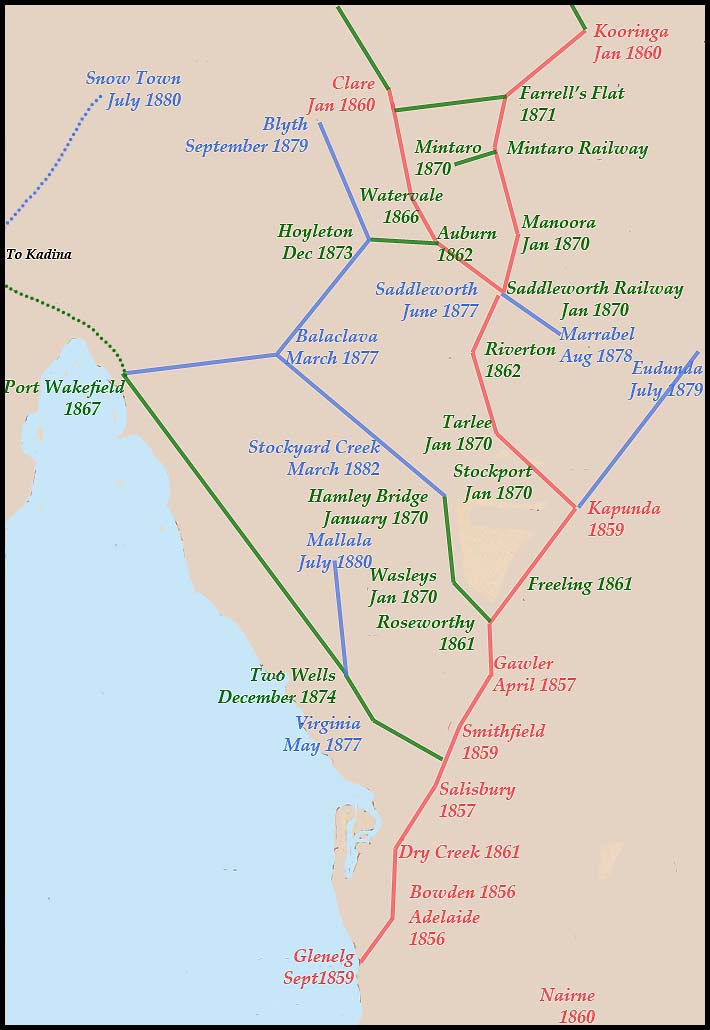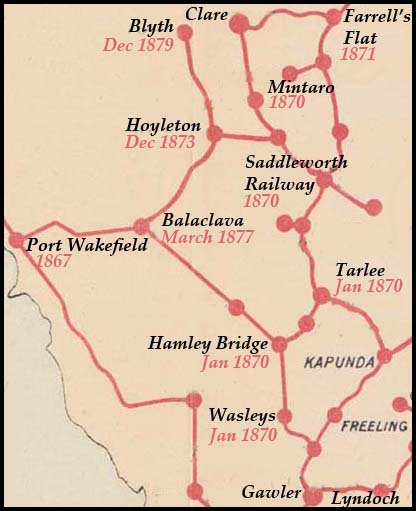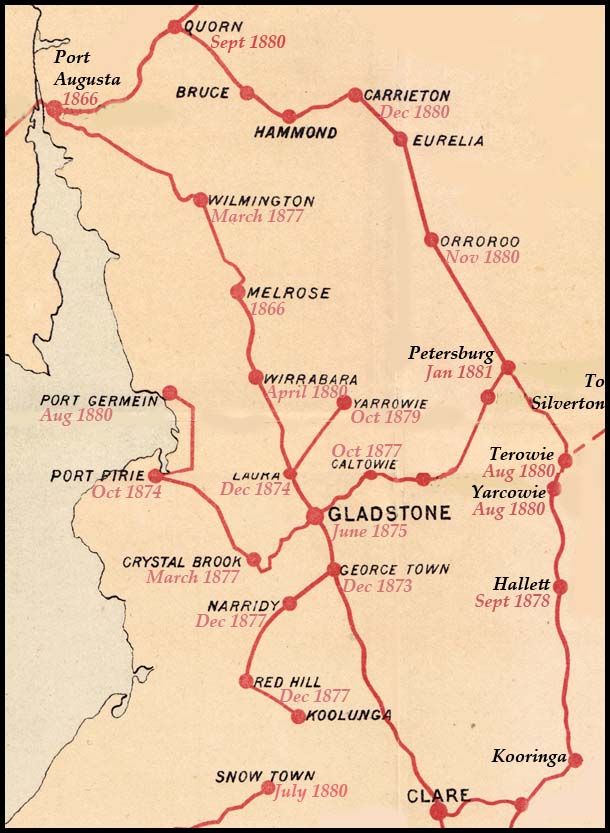Telegraph lines constructed to the north.
- Site home & details
- Australia 1901-1988
- New South Wales
- Queensland
- South Australia
- Tasmania
- Victoria
- Western Australia
- International
- Special aspects
NEED THE EUDUNDA SEGMENT ADDED - 1879
This northern line was constructed about the same time as the line south to Willunga. The southern line received construction priority but, after the first link to Melbourne had been made in 1858, further work began on the northern line. The summary of developments is presented in two sections:
- the region north from Adelaide to Clare and Kooringa;
- the region north from Clare and Kooringa to Port Augusta and Quorn. From here the Overland Telegraph line was constructed.
Construction of the first line to the north began in January 1857. It went about 28.5 miles and followed the railway line from Adelaide to Gawler via Salisbury.
Telegraph stations were constructed at both locations as well as at the intermediate location of Salisbury. The line was opened to the public on 14 April 1857. This line from Adelaide comprised two wires run over poles spaced 27 to the mile. The posts were 17 feet long (about 5 metres) except at level crossings where 22 foot posts (6 metres) were used.
 |
The construction stragegy for the northern line from Adelaide to Clare-Kooringa reflected the policy of extending the lines in large stretches to encompass large areas.
|
In 1862, a new line was also constructed branching off the northern line between Salisbury and Smithfield past Port Wakefield to Kadina and Wallaroo. These two Offices were the basis for the construction of lines down the Eyre Peninsula during the 1870s. Five years after the line to Wallaroo had been constructed, the Telegraph Office at Port Wakefield was opened (in 1867).
Very little construction took place in this lower section of the Northern line during the next eight years. Telegraph Offices were opened at Riverton (1864) and at Watervale (1866).
 |
There was then a stimulus in 1869/70 just before the construction activity began for the Overland Telegraph line. This stimulus was in part provided by the construction of the Roseworthy to Kooringa railway line. As the railways were extended, the link with telegraph lines became very close. Hence the rail link to Kooringa (Burra) was critical for many reasons - see the account of a public meeting about the need for the link.
The new route for the telegraph line, following the new railway line, branched north of Gawler to link to:
Telegraph Offices were opened at the railway stations as soon as possible. The railway line reached Kooringa in 1870 (the same year as a rabbit plague). The copper mines at Burra first closed in 1877.
|
The lines north from Clare-Kooringa to Port Augusta-Quorn.
Second line: In 1880, major construction activity opened a second line north from Kooringa. A short line had linked to Hallett in 1878 and then the line ran to Terowie to Orroroo and Carrieton to meet the Overland Telegraph line at Quorn. That additional line reduced the traffic on the line from Adelaide via Clare and Gladstone - traffic which was significant in number of messages coming into South Australia from four of the other Colonies.
Far north-east line to NSW: The line from Terowie to Silverton and Broken Hill followed the railway line constructed in 1880s. It passed through Yunta and Cockburn where Telegraph Offices were opened in January 1887.
One of the camps used for building the Overland Telegraph line was at Hergott Springs (established as Mareein 1883 but called Hergott Springs until 1916). Maree and Beltana to the south were both possible branching points for a telegraph line from South Australia running also via Innaminka directly to Queensland - possible via Charleville.

